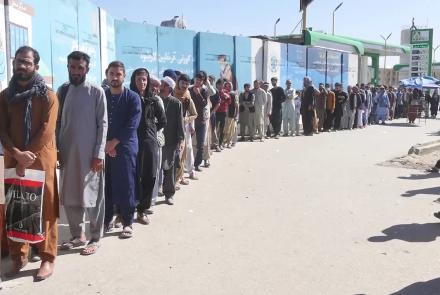Some applicants for electronic national ID cards complained about the rising costs of getting a card.
They said that while the cost of each electronic national ID had previously been 100 Afghanis, it has now increased to 300 Afghanis.
The applicants asked the officials of the National Statistics and Information Authority (NSIA) to reduce the cost of the electronic national ID card as in the past.
"The cost of the ID card (Tazkera), which was formerly 100 Afghanis, has increased to 300 Afghanis. Because the majority of people are unemployed, the costs should be lowered,” said Mohammad Zahir, a resident of Parwan.
“I want to get a Tazkera, it used to be cheap, but the price has gone up today,” said Irfanullah, a resident of Kabul.
Meanwhile, Kabul residents welcomed the start of the process of distributing electronic ID cards in the country.
"It has been a week since the printing house has been operational again. One day after registering, a person will complete biometric processing, and a week later, they will obtain their ID card,” said Sharifullah, a Kabul resident.
However, officials of the National Statistics and Information Authority (NSIA) said that three million electronic ID cards had been printed by a Korean private company, of which 1.7 million had already arrived in Kabul and another 1.3 million would come in the near future.
"The National Statistics and Information Authority signed an agreement with a private Korean company to print polycarbonate cards, and now one package has arrived, consisting of three million ID cards (Tazkeras), one shipment of 1.7 million has arrived, and 1.3 million is being transferred," said Mohammad Halim Rafi, spokesman for NSIA.
The distribution of electronic ID cards has resumed in all provinces, the NSIA official said.
According to Rafi, for the first time, NSIA has distributed paper ID cards to 571 residents of Wakhan district of Badakhshan.
"Tazkeras were not given to them during the republic administration. Our office's electronic identification team went to the Pamirs of the Wakhan region in Badakhshan and distributed them to 571 people. Due to issues, paper ID cards rather than electronic ones were provided,” said Rafi.
About ten thousand people in the nation receive electronic ID cards every day, according to data from the National Statistics and Information Authority (NSIA), and more than eight and a half million people have received electronic ID cards so far.


Comment this post